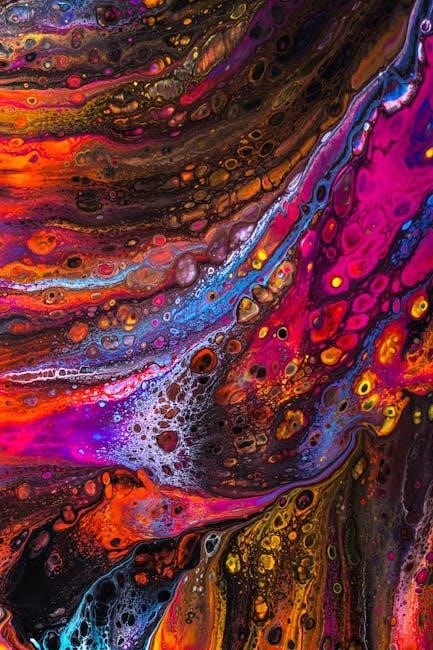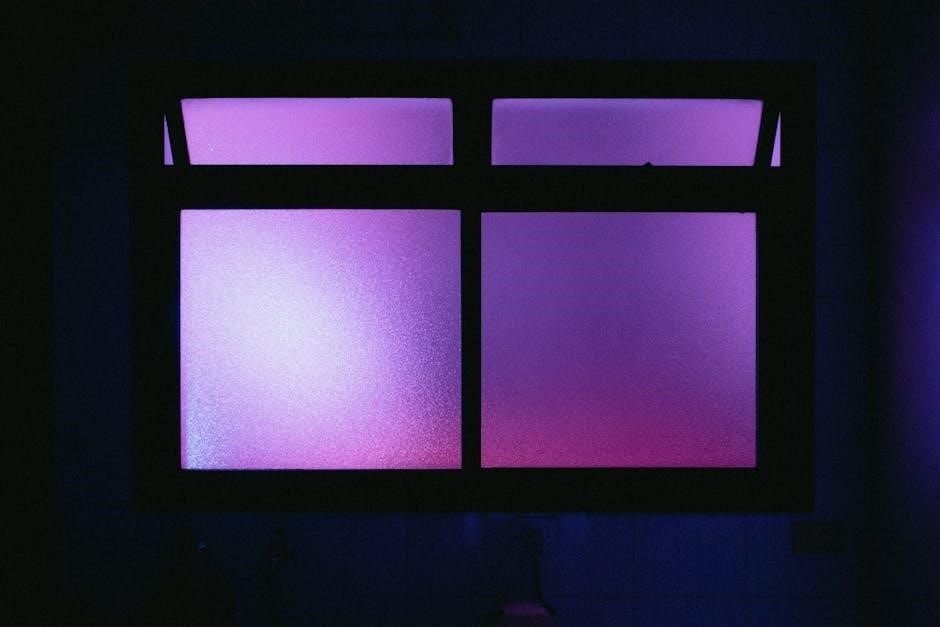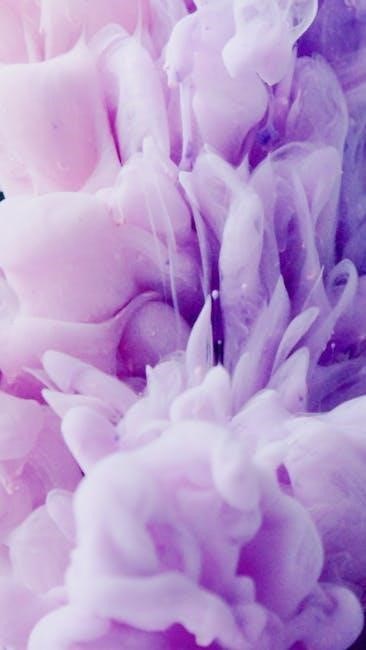
Welcome to our comprehensive window tint guide, where we explore the world of window films, helping you understand their benefits, types, and legal considerations to make informed decisions for your vehicle or home.
Understanding Visible Light Transmission (VLT)
Visible Light Transmission (VLT) measures the percentage of light passing through tinted windows. Lower VLT percentages indicate darker tints, reducing visibility and sunlight entry. Understanding VLT helps in selecting the right tint for privacy, UV protection, and glare reduction while ensuring compliance with legal standards.
What is VLT?
Visible Light Transmission (VLT) is the percentage of light that passes through a tinted window. It measures how much visible light is allowed to enter, with lower percentages indicating darker tints. VLT is crucial for understanding how tinted windows perform in terms of light transmission, glare reduction, and privacy. A higher VLT, such as 70%, means more light passes through, while a lower VLT, like 5%, results in much darker windows. VLT is a key factor in determining the effectiveness of window tint for UV protection, heat reduction, and visibility. It also plays a significant role in legal compliance, as many states regulate the minimum VLT allowed for vehicle windows. Understanding VLT helps you balance aesthetics, functionality, and legal requirements when choosing the right tint for your needs.
How to Measure VLT with a Tint Meter
Measuring Visible Light Transmission (VLT) with a tint meter is a straightforward process that provides accurate results. A tint meter is a specialized device designed to measure the percentage of light passing through a tinted window. To use it, place the meter on the tinted surface, ensuring it is clean and free of obstructions. Turn on the device and allow it to calibrate according to the manufacturer’s instructions. The meter will then display the VLT percentage, indicating how much light is transmitted through the tint. For precise readings, avoid measuring in direct sunlight or on uneven surfaces. Professional tint installers often use high-quality tint meters to ensure compliance with legal standards and to verify the effectiveness of the tint. Accurate VLT measurements are essential for both legal compliance and understanding how well the tint performs in terms of light transmission and privacy.

Different Window Tint Percentages
Window tint percentages range from 5% to 70%, balancing privacy, visibility, UV protection, and legal compliance. Each percentage offers unique benefits, catering to diverse preferences and regional regulations.
5% Tint (Limo Tint)
The 5% tint, often referred to as “limo tint,” is the darkest available option, allowing minimal light transmission. It provides maximum privacy, making it nearly impossible to see inside the vehicle. This tint is commonly associated with luxury vehicles like limousines and is favored for its sleek, mysterious appearance. However, it is illegal in most states due to visibility concerns. Some jurisdictions permit its use on rear windows for privacy and security, especially in high-end or armored vehicles. Despite its restricted use, the 5% tint remains popular for its ability to enhance style and protect occupants from prying eyes. Its extreme darkness offers unparalleled privacy but may compromise driver visibility, especially at night or in low-light conditions.
20% Tint
A 20% tint offers a balance between privacy and visibility, making it a popular choice for many drivers. It allows 20% of visible light to pass through, providing a sleek, modern appearance while reducing glare and UV exposure. This tint is darker than 35% or 50% options but lighter than the 5% limo tint, offering a middle ground for those who want privacy without extreme darkness. It is commonly used on front and rear windows for a cohesive look. The 20% tint is effective at blocking UV rays and reducing heat buildup inside the vehicle, enhancing comfort and protecting the interior. However, its legality varies by state, so it’s essential to check local regulations before installation. This tint is ideal for drivers seeking a stylish, functional solution that offers both privacy and visibility in everyday driving conditions.
35% Tint
A 35% tint is a popular choice for drivers seeking a balance between privacy, visibility, and UV protection. It allows 35% of visible light to pass through, offering a moderate level of darkness that enhances privacy while still maintaining clear visibility. This tint is effective at blocking UV rays and reducing glare, making it ideal for daily driving. It also helps reduce heat buildup inside the vehicle, keeping the interior cooler and more comfortable. The 35% tint is a versatile option, suitable for both front and rear windows, and is often preferred by those who want a subtle, stylish appearance without extreme darkness. Its moderate VLT makes it legal in many states, but it’s always important to check local regulations. This tint is a practical and aesthetic choice for drivers who want a balance of functionality and privacy.
50% Tint
A 50% tint is a lighter shade that offers a balance of visibility and light blocking. It allows 50% of visible light to pass through, making it a popular choice for drivers who want minimal tint but still desire some UV protection and glare reduction. This tint is ideal for those who prefer a subtle appearance without extreme darkness; It provides effective UV protection, blocking 99% of harmful rays, and helps reduce interior heat buildup. The 50% tint is also a good option for front windows, as it maintains clear visibility while offering some privacy. It’s legal in most states, but always check local regulations. This tint is perfect for drivers who want a light, understated look while still enjoying the benefits of window tinting, such as reduced glare and improved comfort during sunny drives.
70% Tint
A 70% tint is the lightest option available, allowing 70% of visible light to pass through. It provides minimal tinting and is nearly invisible, making it a great choice for those who want to maintain maximum visibility while still enjoying some benefits of window tinting. This tint offers excellent UV protection, blocking 99% of harmful UV rays, and reduces glare from sunlight, improving driving comfort. It’s also highly effective at reducing heat buildup inside the vehicle, though less so than darker tints. The 70% tint is legal in most states and is often recommended for front windows to maintain clear vision. Its subtle appearance makes it ideal for drivers who prefer a natural look but still want protection from the sun. This tint is perfect for everyday use, balancing functionality with a barely noticeable aesthetic change.

Benefits of Window Tint
Window tint offers multiple advantages, including UV protection, heat reduction, glare minimization, and enhanced privacy, making it a practical and stylish addition for any vehicle.
Heat Protection
Window tint provides exceptional heat protection by blocking infrared radiation, which is responsible for solar heat buildup inside vehicles. This reduces the need for constant air conditioning, saving fuel and enhancing comfort. The tint acts as a barrier, preventing excessive heat from entering through the windows, especially during summer months. By maintaining a cooler interior, window tint helps protect upholstery from fading caused by direct sunlight. Additionally, it reduces glare from sunlight, improving visibility and driving safety. The energy-saving benefits of window tint are significant, as it minimizes the strain on your vehicle’s cooling system. Overall, heat protection is one of the most practical advantages of window tint, offering both comfort and long-term savings for drivers.
UV Protection
Window tint offers exceptional UV protection, blocking up to 99% of harmful ultraviolet rays from penetrating through the glass. This not only protects passengers from potential skin damage caused by prolonged sun exposure but also safeguards your vehicle’s interior. Over time, UV rays can cause upholstery to fade and crack, but window tint acts as a protective barrier, preserving the condition and appearance of your car’s interior. The UV-blocking properties of window tint are available across all tint levels, from the darkest 5% to the lightest 70%. This feature is particularly beneficial for individuals who spend significant time driving or for those living in areas with intense sunlight. By reducing UV exposure, window tint contributes to a safer and more comfortable driving experience while maintaining the longevity of your vehicle’s interior.

Legal Considerations
Window tint laws vary by state, with specific regulations on allowable VLT percentages. Most states prohibit dark tints on front windshields, except for a small AS-1 line area. Medical exemptions may permit darker tints in certain cases. Always check local laws to ensure compliance and avoid legal issues.
State Regulations
Window tint laws vary significantly across states, with specific restrictions on Visible Light Transmission (VLT) percentages. Most states prohibit dark tints on front windshields, except for a small area at the top, typically 5-6 inches, known as the AS-1 line. For side windows, regulations differ: some states allow darker tints, while others enforce minimum VLT limits. For example, front side windows may require at least 35% VLT, while rear windows often have no restrictions. These laws are enforced to ensure driver visibility and safety. It’s crucial to check local regulations before installing window tints to avoid fines or legal issues. Violating these rules can result in penalties, so compliance is essential. Always consult your state’s Department of Motor Vehicles (DMV) for precise tinting guidelines to ensure your vehicle meets legal standards.
Medical Exemptions
In some states, individuals with medical conditions may qualify for exemptions to window tint laws. Conditions such as photosensitivity, migraines, or skin disorders often require darker tints for health protection. To obtain a medical exemption, a licensed physician must provide a written statement detailing the condition and the need for darker window tints. This documentation must then be submitted to the state’s Department of Motor Vehicles (DMV) for approval. Exemptions vary by state, but they often allow the use of darker tints on side and rear windows, even if they fall below the standard legal limits. It’s important to note that these exemptions do not typically apply to windshields, and the tint must still meet specific safety and visibility standards. Always consult your state’s DMV for detailed requirements and to ensure compliance with local regulations.

Maintenance and Care
Proper maintenance and care are essential to extend the life of your window tint. Regular cleaning with a mild soap and water solution, using a microfiber cloth, helps prevent dust and dirt buildup. Avoid using abrasive chemicals or scrubbers, as they can damage the tint’s surface. For tougher stains, a vinegar-based solution can be effective, but test it on a small area first. Regular inspections for bubbles, peeling, or scratches are crucial, as addressing these issues early prevents further damage. Parking in shaded areas or using sunshades can reduce exposure to direct sunlight, which may cause fading over time. Avoid rolling windows up or down excessively during the curing period (usually a few days post-installation) to ensure proper adhesion. For severe damage or complex repairs, consult a professional installer to maintain the tint’s appearance and functionality. Proper care ensures your window tint remains effective and visually appealing for years.